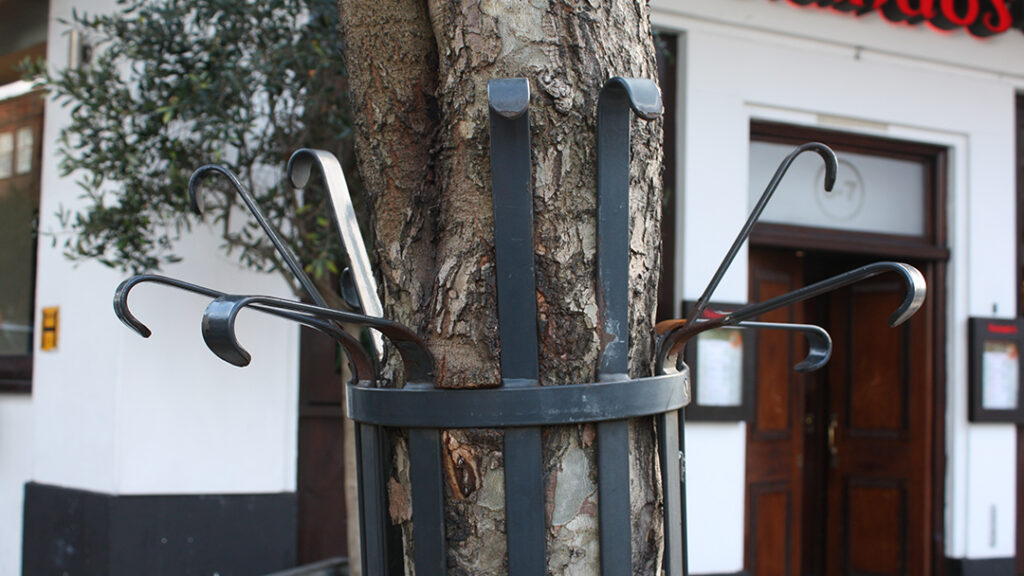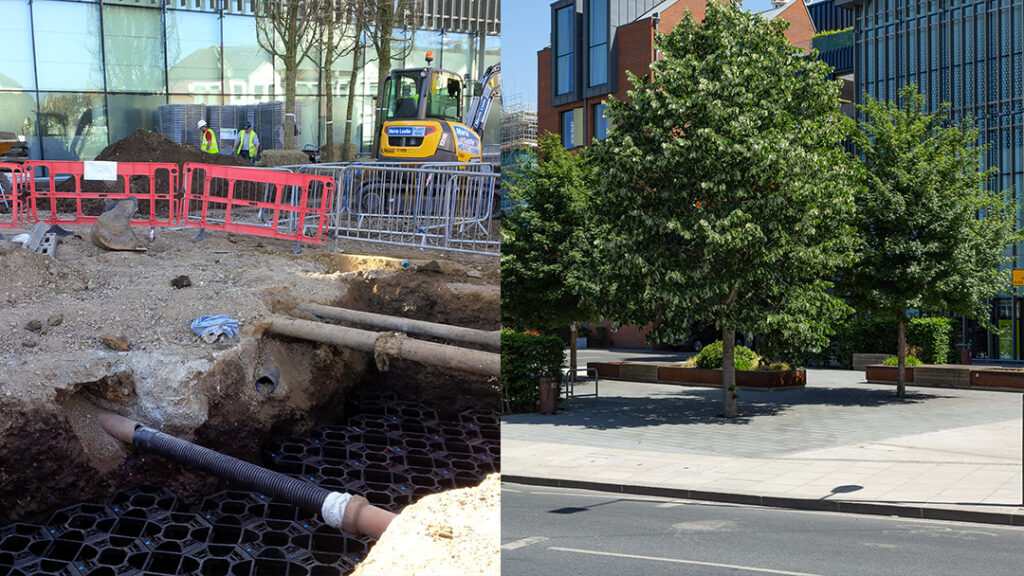As soon as tree planting is proposed in our congested urban areas, the full plethora of challenges quickly become obvious. With over 30 years of experience in getting trees established in what can be very hostile conditions for what are essentially forest plants, GreenBlue Urban have unrivalled experience in every scenario.
When planning urban tree planting, an understanding of the constraints that urban areas present are critical if long term canopy cover is going to be possible. These constraints are usually divided into two categories: above and below ground challenges.
The above-ground issues are often more obvious, and arguably simpler to resolve. These include such considerations as canopy size and spread – to avoid potential vehicular conflicts and complaints about excess shading, long term tree species structural integrity – to reduce the chance of liability in the future, and careful thought given to whether the planting will be sustainable for the long term.

The below-ground conflicts can be more problematic, as there are so many stakeholders that have an interest in what happens beneath our urban surfaces. Tree roots are opportunistic in how they grow, and it, therefore, becomes difficult to predict exactly how the rooting system will establish, which causes concern with those who are responsible for surfaces and utilities. Guidance available from various sources often discourages tree planting anywhere near utility runs, but these are misleading, as every day we assist designers and installers overcome these apparent barriers.

The first consideration must be whether sufficient soil volume can be accessed for long term health; if not, it is best to find another site. If there is potentially good soil volume, the next stage is to identify what below ground constraints exist – utility runs, cellars or tunnels and other constructions, and to then quantify whether these constraints are at risk from tree establishment. Modern utility ducts and pipework is largely root resistant, and roots do not pose a threat to cables, so it is simpler to plant around these. Where there are older drainage pipes, usually clay or cast iron, which can crack or split over time, then caution should be used as fine fibrous roots can access through very small apertures, and thicken over time, creating blockages and other problems.
The use of GreenBlue Urban’s root management systems greatly eases the challenges of protection of below-ground infrastructure; when installed in accordance with the instructions, are root proof for the life of the tree. ReRoot barriers are manufactured from 100% recycled HDPE and are held in stock in various depths to suit every scenario. When selecting which depth of barrier to use, it is recommended that the barrier should continue for a minimum of 250mm below whatever is to be protected to prevent “J rooting” where the roots burrow beneath the root barrier. Certain tree species such as Willow or Poplar need the root barrier to finish in a concrete foundation, as these trees root extremely vigorously and have been known to escape from root management – albeit that these species would not usually be planted in an urban location!

The many case studies available on the GreenBlue Urban website showcase how successful tree planting can be achieved in congested urban areas. Collaboration with all stakeholders is essential, as an understanding of the constraints and solutions available helps all parties achieve agreement. Many utility companies now accept that trees do not always damage their property, but fear public opinion if, at some point in the future, a tree has to be removed for utility upgrades, for example. At GreenBlue Urban we believe in intelligently considered tree planting, and consider the possible future loss of a tree as a sad loss, but if we do not plant trees now, there will not be trees to lose in the future.




